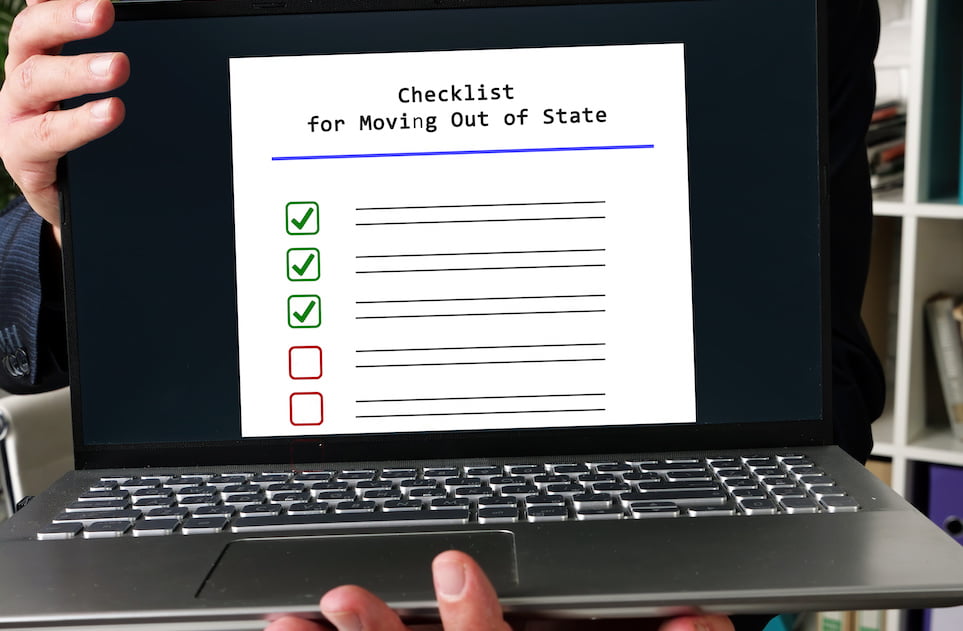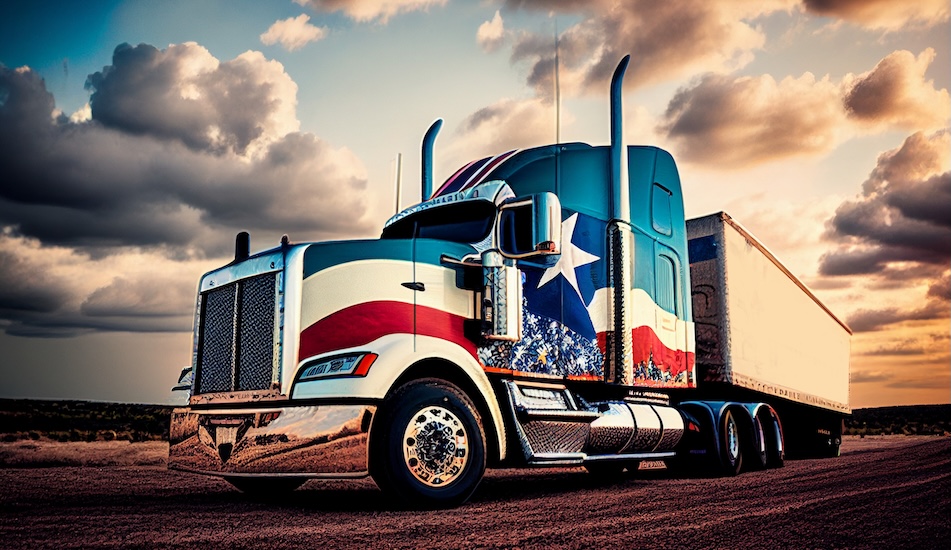Everything You Need In Your Interstate Moving Checklist To Ensure For A Smooth Move

Moving out of state is a long process that requires weeks of preparation. You’ll need to look into different moving companies to ensure all your things, from clothing to precious cargo, are transported safely. (Italics) Proper organization is the key to a successful and seamless move. It makes everything easier and ensures you don’t leave anything behind. That’s where having a moving checklist comes in. It can help you keep track of everything and act as your comprehensive guide to interstate moves.
Here are the essentials you must add to your checklist when moving interstate.
Planning and Preparation

A long-distance move has many factors, from your budget to the people involved. The best way to address something this big is to plan. The more prepared you are, the easier your move can be.
Make a Timeline
Before you start packing, making a pre-moving date timeline is best. The weeks leading to your move will be stressful, especially with everything you need to prepare. Dedicate AT LEAST six weeks for the whole moving process. Try to keep your timeline detailed and organized.
Research and Select a Moving Company
While planning, it’s best to consider if you’ll be hiring professional movers or renting a truck for your move. Many expert interstate relocation services can help you pack your things, move them to your new house, and unpack them for you. Some can also provide a storage unit if necessary if you have too many things to move. If you plan to move, you can also look into truck rentals that fit your moving budget. You can get better deals the earlier you find reputable interstate moving companies. Their prices can be high during weekends, and the peak moving season, so try to plan your move around them to save money.
Budgeting for Your Interstate Move
It’s best to set a specific budget for your move. Consider your housing costs, utilities, moving services, and additional costs you may encounter along the way. It would be best to consider a moving budget covering the first few weeks and any unexpected expenses. It’s also important to have a job lined up to sustain your cost of living once you’re in your new neighborhood. You should also consider the cost of living differences between different states.
Notify Important Parties of Your Move
Inform your families and friends about moving out of state beforehand, especially if you need help with the big move. You also give yourself time to prepare your child emotionally for this new adventure.
Update Your Address and Transfer Services
It’s best to update all your addresses with all the services you need before you move out of state. These include your voter registration, information with financial institutions, driver’s license, and other government parties. Having this arranged early on can help lessen the additional cost of sending mail and services to the wrong place.
Interstate Moving Checklist
Making a checklist of what you must do before your move can sound overwhelming, especially if you simply list them down. The more detailed you are, the easier they are to manage. That way, you can dedicate time specifically for certain aspects of moving. We’ve made a comprehensive checklist to help you from day one of your moving journey.
8 Weeks Before the Move
The earlier you get started, the better.
Here are a few things you can start planning before you move out:
- Research moving companies. Canvassing early on can help you get great deals and save money.
- Have a budget. Know how much you’re willing to pay to have your things moved to your new place.
- Think about storage. You might need temporary storage if there are any gaps between your move. You can arrange this with your moving company.
- Get several estimates. Search for FMCSA-registered movers for estimates for their services. You can also check the Better Business Bureau for information on your moving company and broker.
- Create a moving inventory. Have everything you need in a comprehensive moving checklist, including the measurements of your furniture and oversized items.
- Give a notice. For those renting, it’s best to double-check your lease and inform your landlord AT LEAST 30 days before moving so you can fix your rental agreement.
- Visit your new community. Get to know where you’re moving to beforehand.
6 Weeks Before the Move
Now’s the time to start booking your shipping and travel arrangements early to get the best deals.
Here are the things you can do six weeks before the move:
- Plan your transportation and lodging. Book airfare or a hotel as needed. The earlier you book them, the better deals you’ll get. It also gives you time to plan your trip and stops ahead.
- Declutter your current home. Start giving away, selling in a garage sale, and donating items you won’t need to help you save time and money. This can also make the house more attractive to potential buyers.
- Arrange for your vehicle(s) to be shipped. You can also hire a moving company, especially if you plan to take a plane.
- Start gathering moving boxes and supplies. Familiarize yourself with the supplies you’ll need to help you move all your belongings.
- Back up all important documents. Ensure all your digital files are backed up and your physical documents are scanned into the cloud so you won’t have to worry if something goes missing.
4 Weeks Before the Move
Moving day is a month away. It’s time to start informing people about your big move and begin your packing process. Here’s a checklist of things you need to do four weeks before your move:
- Start transferring your utilities. It’s best to set the cancelation date for your current home and the start date for your new one so you don’t have to spend time in a house without power, water, or gas.
- Change your address. Arrange this with the U.S. Postal Service, subscription services (websites, magazines, etc.), and your credit card companies so that you can get all your mail correctly. You might also have to update online accounts, especially e-commerce sites, to get all your purchases accordingly.
- Start packing. It’s best to start with this part early. Go from room to room, but leave spaces like bathrooms and your kitchen for when you’re close to the moving date. This is also the best time to start packing your outdoor furniture. Label everything clearly and ensure that your valuable items, such as documents and jewelry, are set aside for you to transport personally.
- Clean out unwanted items. Decluttering once isn’t enough since you might see something you’d want to let go of as you’re packing. Set these aside and ensure they’re correctly disposed of, especially if you find hazardous household items.
- Notify others of your move. Tell your family, friends, business partners, and anyone important about moving out of state. Inform them of your new address if they decide to send you something.
2 Weeks Before the Move
Moving day is just around the corner. This is the best time to start arranging everything to make it easier for professional movers to pack your things in the van later.
Start planning your things by following this checklist two weeks before your big move:
- Take pictures for reference. Use these pictures to help you know where to place your furniture once you move. It also helps ensure you have all your belongings before your trip.
- Pack your clothes with their hangers. Group your clothes depending on your preference, along with their hangers. It helps prevent wrinkles and makes unpacking easier.
- Organize your boxes by weight. This can help you identify which boxes you might need help with once you move.
- Find a parking spot for your moving truck. You can work with your moving company to find a good spot for your moving truck when loading and unloading your things.
- Have travel arrangements for your pets. You can either arrange this with your moving company or take them with you in your car during moving day.
- Clean and prepare your home. This is the best time to start living with only your essentials.
1 Week Before the Move
You’re moving out of state in a few days. If you’ve been preparing, these days should be much lighter.
Here’s everything you need to do before your big day:
- Take a break. Moving can be very stressful and tiring. Try to schedule breaks to relax to be more productive and well-rested. You can also ask for some time off to settle in and rest before you start a new job.
- Wrap up miscellaneous tasks. Return any books from the library or settle any unpaid parking tickets. Get your unclaimed mail from the local post office. Cancel services as necessary.
- Contact your utility and service providers. This is the best time to finalize your utilities. Ensure everything is running correctly in your new home and your request for disconnection in your current one is already being processed.
- Prepare your appliances. Start cleaning them out and disassembling any appliances if needed. You can enlist a qualified technician to help you with this step.
- Start planning everything for your move-out day. Confirm details regarding all travel arrangements and temporary housing to make everything easier. Double-check your arrangements with your moving company to ensure everything is on track.
Moving Day
Your move-out date is here, and it’s time to go. Here’s a quick checklist before you lock your doors and hit the road:
- Pack an overnight bag. Prepare your essentials for your trip, like your prescriptions and toothbrush. You can also add a few clothes so you don’t have to worry about immediately taking all of them out on your first night in.
- Clean the house and ensure all items are already moved out as planned. Make sure all your rooms are empty. Keys and other home entry items should also be gathered for the new owners or landlord.
- Pay the moving company. Your final bill is usually determined in advance. Take inventory before the moving truck leaves, and once everything is set in your new house.
- Take a final walk through your house. Make sure you haven’t left anything behind.
- Stay hydrated. Moving is hard work, even if you’re not doing the heavy lifting. Drink lots of water and eat whenever you can to keep your strength up.
After the Move
Moving doesn’t stop with everything getting dropped off in your new neighborhood. Here are some essential things to remember after your move-in date:
- Change your locks. Have a local locksmith change your locks to ensure that the previous owners, home service providers, and your real estate agent won’t have access to it, especially if they have copies of the old keys.
- Hire an electrician to check your wiring. Hiring a professional electrician to check your wiring is important, especially if you are moving to an older home. Faulty wiring can cause sparks, electrical shorts, and fires.
- Check your smoke detectors. Inspecting your smoke detectors after your move is vital to ensure they’re working correctly. You can also add carbon monoxide detectors for added safety.
- Assemble furniture and take inventory. While you don’t have to do this on the first night in your new home, starting early with inventory is best to ensure you don’t lose anything. Use your reference photos to help you arrange all your furniture.
- Update the local government offices. You’ll need to update your vehicle and voter registration. You must follow the new local laws since you’re living in a new location.
- Meet the neighbors. Once you’re all settled in your new neighborhood, it’s a great time to meet your neighbors and start building relationships with new friends you’ll be surrounded with for the coming years.
Staying Organized During the Move
While hiring a full-service moving company can help make things easier, keeping everything on record and organized during the move is important.
Here’s how you can stay organized while preparing for a long-distance move.
Create a Moving Binder
Have all your documents organized into a moving binder. It can help keep track of everything about your move, from documents you’ll have to renew once you move out of state to all the receipts and contracts involved during your move. These moving binders can be as specific as you want them as long as they keep your documents organized while you’re organizing your move.
Use Labels and Color-Coding
Labels and color coding can help you know where things should go once you get everything to your new house. Keep your labels clear and straightforward so they can be understood by anyone who handles your boxes. Make sure you have a master list of all these labels and color-coding so you don’t forget them. It’s also helpful if you have other people help you with your move, so they can also have a reference.
Keep Essential Items Easily Accessible
Your essentials are usually the things you pack last. Keep them in check as your moving date approaches, and pack them accordingly. It’s also best to plan which essential items will go to your personal car for your trip and which will go with the moving services. It will help you know what to pack last and ensure you always have your essentials within reach.
Make a Master Inventory List
Keep a record of everything in your house, especially the things you plan to take to your new home. If you’re packing room per room, you can easily list everything based on where you got the item. This will not only help ensure that you don’t forget anything. It will also remind you where things should go once you move in.
Packing Tips and Strategies
Packing usually depends on what makes the most sense for you. It should work as long as you can find everything you need and don’t leave anything behind. However, there are a few ways to make packing much easier so it doesn’t have to be a huge chore. Here are a few packing tips and strategies to make your move easier.
Packing Supplies
It’s important to factor in your moving supplies along with your moving expenses. You’ll have to stock up on boxes, packing tape, and bubble wrap. Ensure you have boxes of all sizes, especially for your bigger items at home. It would be best to familiarize yourself with the different moving boxes, like wardrobe boxes and dish packs. You can get all your moving supplies online these days. However, you can still visit your local hardware store for heavy-duty supplies.
Packing Fragile Items
Ensure all fragile items are secure and they won’t have anything heavy on top of them. Wrap them properly with bubble wrap so they can have a buffer between external pressure during your move. Be sure to label boxes with fragile items so the moving company knows to be careful with those boxes.
Packing Room by Room
When packing, it’s best to do it by room. That way, you won’t mix up items once you move out. It also makes the unpacking process easier and more organized. Take your time clearing each room out so you’ll know which items can be kept and which can be donated.
Disassembling Furniture
It’s best to keep all your user manuals to help you disassemble your furniture. These will also be used when you reassemble them in your new home. Unplug any electric appliances before disassembling them. Ensure all appliances are dried out, especially dishwashers and washing machines. We recommend hiring a professional to help with disassembling any tricky appliances.
Packing Important Documents and Records
You’d want to secure all important records and documents for your move, especially if you need them for government processes.
These are some of the most important documents you might want in a checklist so you can double-check them while you’re packing:
- Birth certificates and passports
- Medical records
- School records
- Financial statements
- User manuals for appliances
You can also digitally back these up for more security.
Starting Over in a New State
When moving several state lines away, keeping important government offices informed is important. No matter what age you move, moving out of state will have many requirements and laws we all have to follow. Here are some interstate moving tips for seniors and adults of any age to make everything more seamless.
Registering Your Vehicle
When you move to a new state, you’ll have to go through vehicle registration all over again to keep the local authorities updated. You’ll have to update your address and personal information accordingly. Visit the local Department of Motor Vehicles (DMV) as soon as possible to have this sorted.
Getting a New Driver’s License
Once you’ve moved, you’ll also have to get a new driver’s license with updated information about your new address and contact details. You can update this along with your vehicle registration to make things easier.
Registering to Vote
Crossing state lines means participating in the local politics of your new home. Update your voter registration so you can actively participate during elections in your new local government.
Finding New Healthcare Providers
Look into the healthcare providers around the area before you move to a new state. Learn about the quality of healthcare and the practitioners in town. Know where the nearest hospitals and clinics are. Even if you don’t need them now, it’s best to know their location in case of emergencies. You might also want to consider specializations if your family needs specific doctors for your health conditions.
Connecting with Community Resources
Learn about the local community and how you can participate in them. They can hold social events or programs you and your household can join. If you have kids, you might want to know the nearest schools and their quality of education. Familiarize yourself with the local establishments, especially the places where you’ll be getting your basic needs. Connecting to your new community and forming new friendships are great ways to get used to your new environment.
Tips for Moving with Pets
Moving to a new place can be stressful, especially for your pets. New environments can be unsettling for them.
Here are a few tips for moving interstate with pets.
Updating Pet Identification
Depending on local laws, you might have to register your pet in your city or county. Familiarize yourself with the requirements and deadlines of your new community. This helps the local government ensure all animals get the necessary shots for public safety.
Visit Your Veterinarian
Have your pet checked by your veterinarian before the move. They can provide a prescription to help your pet be more relaxed about the move. It would be best to ask for your pet’s health records so you can submit them to a veterinarian closer to your new neighborhood.
Plan for Pet Transportation
You can coordinate this with your moving company so they can safely transport your pet to your new home. Ensure all their belongings are also packed and ready to be transported. This includes their toys, food, and other accessories.
Settling Your Pet in Your New Home
Once you’ve moved into your new home, try to set up your pet’s place and have them get used to it. Try to have them stick to their usual routine at home so they can maintain a sense of normalcy.
Frequently Asked Questions
You may have more questions about interstate moving and moving companies.
We’ve collected the most common ones.
How Far in Advance Should I Start Planning My Interstate Move?
It’s better to start planning AT LEAST 6 to 8 weeks in advance. This will give you enough time to research and compare moving companies, request the necessary quotations, and make informed decisions about the moving process. It’s also enough time to pack everything in your house and ensure you have a place to put them, especially if you need additional storage.
What Is the Best Way to Transport My Belongings During an Interstate Move?
The most convenient and efficient way is to hire professional movers. They can handle packing, cleaning, unpacking, and assembling furniture. However, it would be best if you were still involved to ensure that nothing goes missing. If you’re looking for a cheaper way to move, you can hire a moving truck instead. You’ll have to do all the packing and heavy lifting, though.
Can My Pets Travel With Me in the Moving Truck?
If you’re driving the truck, your pet should stay up front in the truck cab with you. They can be in a crate or secured in a harness. We don’t advise putting them in the back because these trailers are not designed to transport animals. You can also look into moving companies and how they can transport your pet.
How Do I Find a Reputable Moving Company for My Interstate Move?
You’d need to do a lot of research to find reputable moving companies. Make sure that the moving company is FMCSA-registered and provide the necessary documents. You can also look into their features, initial deposit value, prices, and insurance. Reviews can also be beneficial when looking for a trusted professional moving company.
What Services Should I Transfer When Moving to a New State?
Moving out of state means you must get everything connected to your new neighborhood.
The most common services you usually transfer are the following:
- Internet/TV (research and compare internet providers at your new address)
- Water
- Electricity
- Waste Removal
- Gas
These basic needs can immediately get your house running once you’ve moved in.
Conclusion
Moving cross country is a massive change for any household. You can make things easier by having a detailed to-do list and planning ahead.
Related Articles
Where to Move from Texas: Top 10 States for Ex-Texans in 2025

Where to Move from Texas: Top 10 States for Ex-Texans in 2025 Record numbers of Texans are exploring life beyond state lines, driven by soaring housing costs, evolving career landscapes, and the search for new lifestyle opportunities. The decision to leave Texas stirs intense emotions – after all, the Lone Star State‘s unique culture and […]
Read MoreHow to Move a House from One Location to Another: Planning to Completion

Relocating an entire house might seem like something out of a movie, but this remarkable feat of engineering happens more often than you’d think. From preserving historic mansions to saving beloved family homes from coastal erosion, house moving represents the intersection of cutting-edge engineering and practical problem-solving. With project costs typically ranging from $18,000 to […]
Read More




